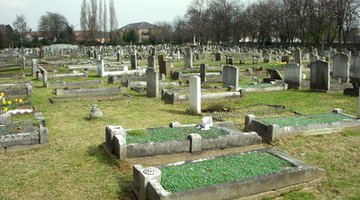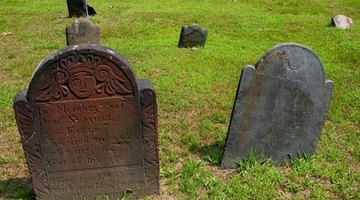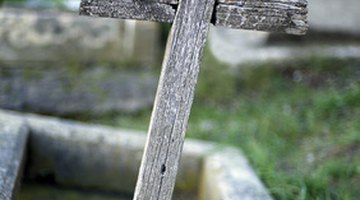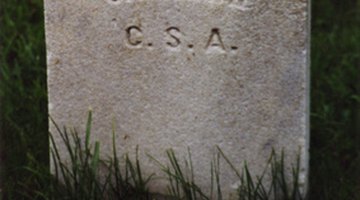At the time of death, a person without a headstone will be buried with a small plastic marker that displays the name and date of death. Weather elements and general cemetery property maintenance will result in these plastic markers being ruined and discarded, therefore leaving the burial plot without a name. This can make it difficult for loved ones to find the proper grave of their deceased family member. By utilising cemetery records, you can find a loved one's unmarked grave based on those that are surrounded nearby.
- At the time of death, a person without a headstone will be buried with a small plastic marker that displays the name and date of death.
- By utilising cemetery records, you can find a loved one's unmarked grave based on those that are surrounded nearby.

Ask the cemetery owner or park manager to give you the specific location of the deceased person you are searching for, as well as the names and location of those that are nearby. Ideally, acquire the information for those buried in the same row as the unmarked grave, as well as any that are immediately surrounding. Federal law requires cemeteries to keep all burial records indefinitely. Therefore, this information will be readily available to you at the cemetery. Burial records will indicate that a person has a headstone or burial marker.

Highlight on a map of the cemetery the general area or section in which the unmarked grave is located. Some cemeteries are very large, so it is important to identify landmarks listed on the cemetery map to find the proper section. A cemetery should also be able to offer you a section-specific map that shows the various grave spaces. On this map, mark the unmarked grave space as well as the nearby grave spaces of reference.

Find the headstone or burial marker that identifies the first grave space of reference that is listed or identified on the section-specific map. The average burial space is 3 1/2 feet wide by 8 feet long.

Measure the distance from one space to the next using the yard stick. If the identifying space is in Row B Space 4, and the unmarked grave you are looking to locate is in Row D, Space 6, you will first need to measure across 7 feet to be in the correct section in the direction indicated by the cemetery map. Stand in this section.
- Highlight on a map of the cemetery the general area or section in which the unmarked grave is located.
- If the identifying space is in Row B Space 4, and the unmarked grave you are looking to locate is in Row D, Space 6, you will first need to measure across 7 feet to be in the correct section in the direction indicated by the cemetery map.

Locate the surrounding points of reference to the unmarked grave. Ideally, if the unmarked grave is in Row D, Space 6, you will want Row C or E, Space 6 or Row D, Space 5 or 7 to be a reference point. This will put you in the space next to the unmarked grave.

Identify the unmarked grave as the space located next to the reference point burial spaces on the cemetery map that does not have a headstone or burial marker. Cemeteries will supply bright coloured flags to be inserted into the ground for future need in locating the unmarked grave.
TIP
If you do not have a ruler, utilise the approximate scale that one large step is the distance across a burial space and two large steps is the length of a burial space. Place a marker such as a painted rock, flag or artificial floral arrangement on the grave so that finding the unmarked grave in the future is simple.
